Plenty of Weapons but No War Rhetoric in National Military Museum
The National Military Museum of the Netherlands is not the museum equivalent of Top Gun: a promo talk disguised as entertainment to entice new recruits. Here a balanced cultural-historical story is told, with room for nuance and self-reflection. But there is also an impressive number of weapons to see.
Liberation Day means peak traffic for the National Military Museum (NMM), especially when the 5th of May falls during a school holiday and the rain drives families from campsites. They then pour in by the hundreds. Some children are already made comfortable on the trip there with the prospect of a ride in a mini tank or tracked vehicle.
The anticipatory excitement that hangs palpably in the air was unthinkable four or five decades ago at an institution that revolves around the culture and history of the national armed forces. There was a pronounced anti-army mood in the Netherlands at the time. Soldiers were discouraged from travelling by public transport in uniform if they did not feel like being the butt of nasty remarks. How different it is in 2023. Awe is the name of the game among NMM visitors and the words ‘freedom’, ‘necessary’ and ‘Ukraine’ are heard remarkably often in the hubbub.
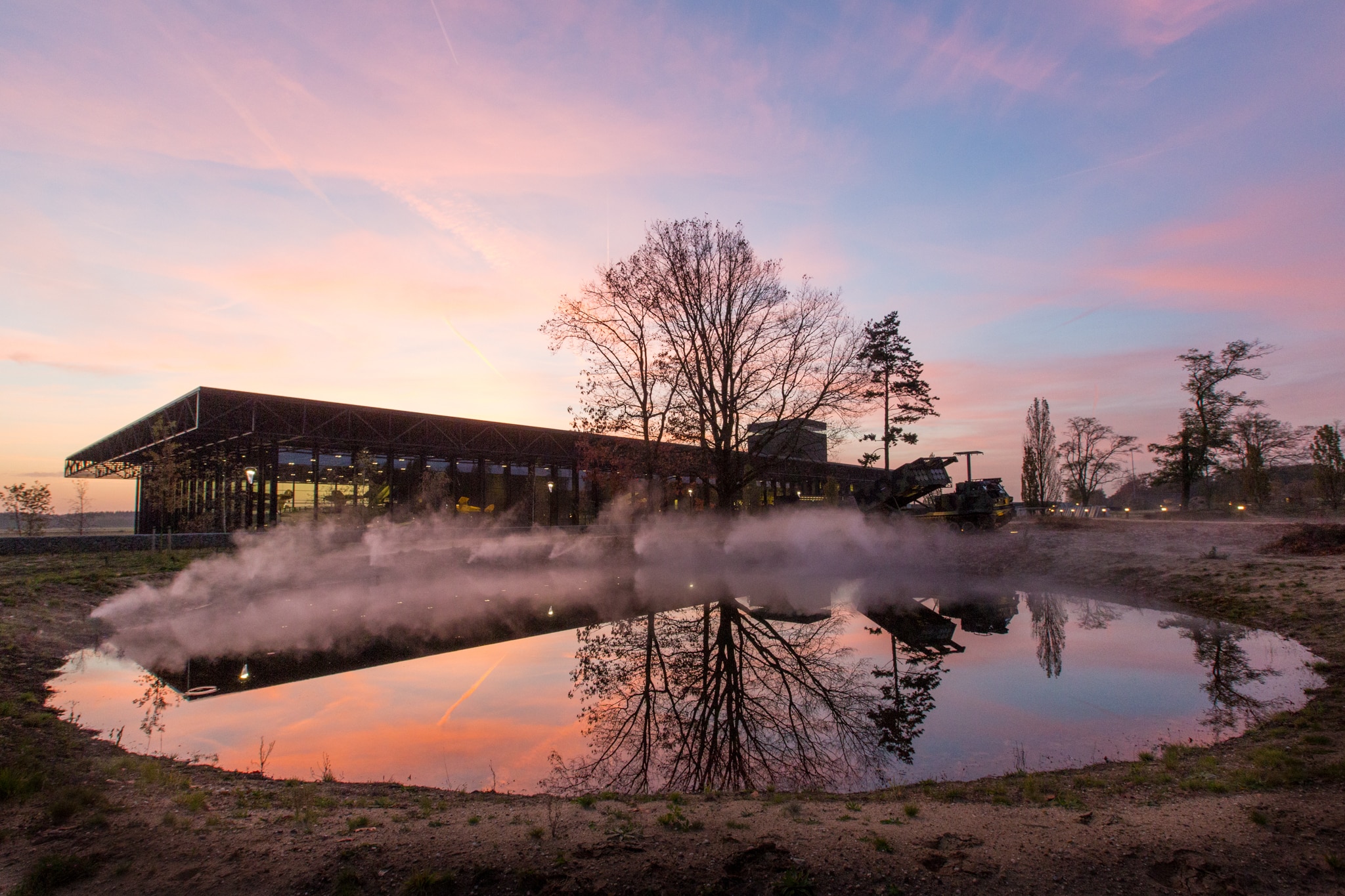 The National Military Museum is located at the former Soesterberg air base.
The National Military Museum is located at the former Soesterberg air base.© NMM
The location and appearance of the museum have everything it takes to get the public in the right mood. The NMM is located at the former Soesterberg air base, not far from the Veluwe national forest where the army traditionally holds its exercises. A B-road among the greenery only reveals the destination after the last bend: a huge black ‘box’ with a thirteen-meter-high façade of glass and behind it the former runways.
There are tanks and bunkers interspersed here and there on the site. For history buffs, ‘Building 45’ is of interest as the oldest aviation building in the Netherlands. But the real work can be found inside, where you really feel how immense the scale of this museum hangar indeed is.
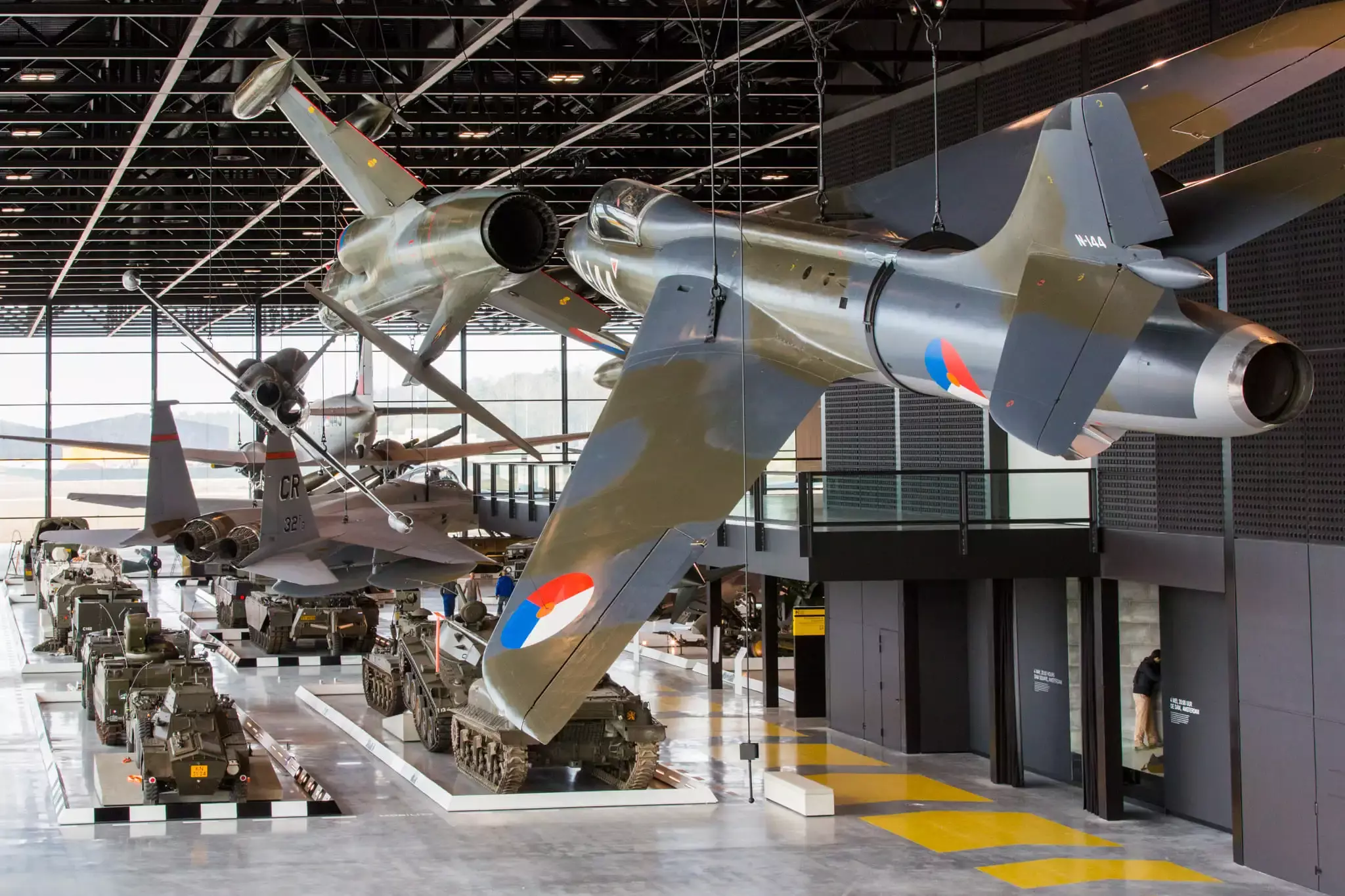 With over 400,000 artefacts, the National Military Museum is home to the largest military collection in The Netherlands.
With over 400,000 artefacts, the National Military Museum is home to the largest military collection in The Netherlands.© Anne Reitsma / NMM
There are no fewer than nineteen aircraft hanging from the ceiling in the open area. Underneath is a cross-section of armoured weaponry from the past century. You can marvel at the Fokker D-21, the fighter plane that slowed down the German advance in 1940, preventing the Nazis from rolling on to England in one go. A YPR can be seen, with which the Dutch UN mission in Bosnia-Herzegovina transported troops. And naturally, the Leopard 2A6 battle tank is also on display, for a long time the showpiece of the army.
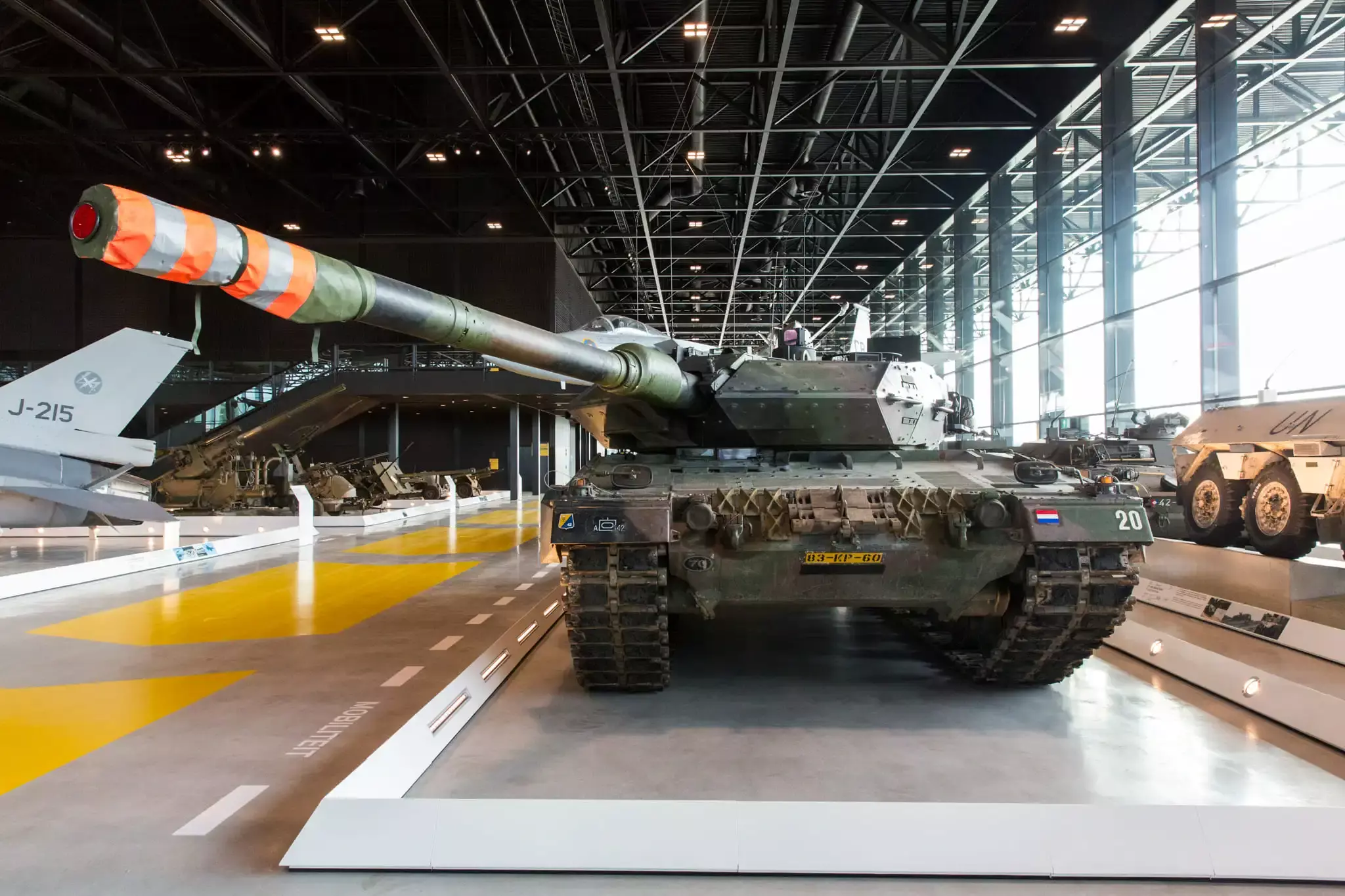 The Leopard 2A6 battle tank is also on display, for a long time the showpiece of the Dutch army.
The Leopard 2A6 battle tank is also on display, for a long time the showpiece of the Dutch army.© Anne Reitsma / NMM
Public displays on this scale were impossible in the old Army Museum in Delft and the Military Aviation Museum in Soest. With more than 400,000 objects, these institutes together manage the largest military collection in the country, so they looked for a location to make them stand out better. At first, a barracks in Amersfoort was a candidate, but when Soesterberg Air Force Base announced that it would close in 2003, the choice was quickly made. With 45 hectares of land, this was the ideal place for new construction.
If the government had financed the merger and relocation all by itself, the result would probably have been a lot more modest. But the construction was tendered through a so-called PPP construction scheme (Public Private Partnership), which made the museum 15% larger. As the contracting party the Ministry of Defence has signed a contract for 25 years, pays rent and for services such as maintenance and catering. The running of the entire operation is in the hands of the party that also was responsible for the design and construction: the Heijmans consortium. A commercial developer such as that benefits from efficiency and the project was realized in no time.
The museum is certainly not limited to spectacle and displays of muscle flexing
It took less than two years between the start of construction and the opening in December 2014 by King Willem-Alexander. And that is no less with a design which is anything but average. The building, which looks a bit like the Neue Nationalgalerie
in Berlin, has a roof area of 110 by 250 meters – four football fields. There are 3,240 solar panels on it that provide a quarter of the museum’s energy needs. The steel structure must also be able to carry many tons of military equipment – not to mention the thousands of visitors.
Immediately upon entering, the museum reveals its greatest asset, the collected arsenal, but also has much else to offer. In the treasure room, portraits of army officers in suits of armour vie with wagon wheels full of rifles and ceremonial sabres. And in a separate room, the war history of Soesterberg, at the time it was renamed Fliegerhorst, is on offer. German aviators pose with local girls in photographs and in one corner is a convex bomb with a 1,000-kilogram payload of explosives that was named Hermann, after the corpulent commander-in-chief of the Luftwaffe, Hermann Göring.
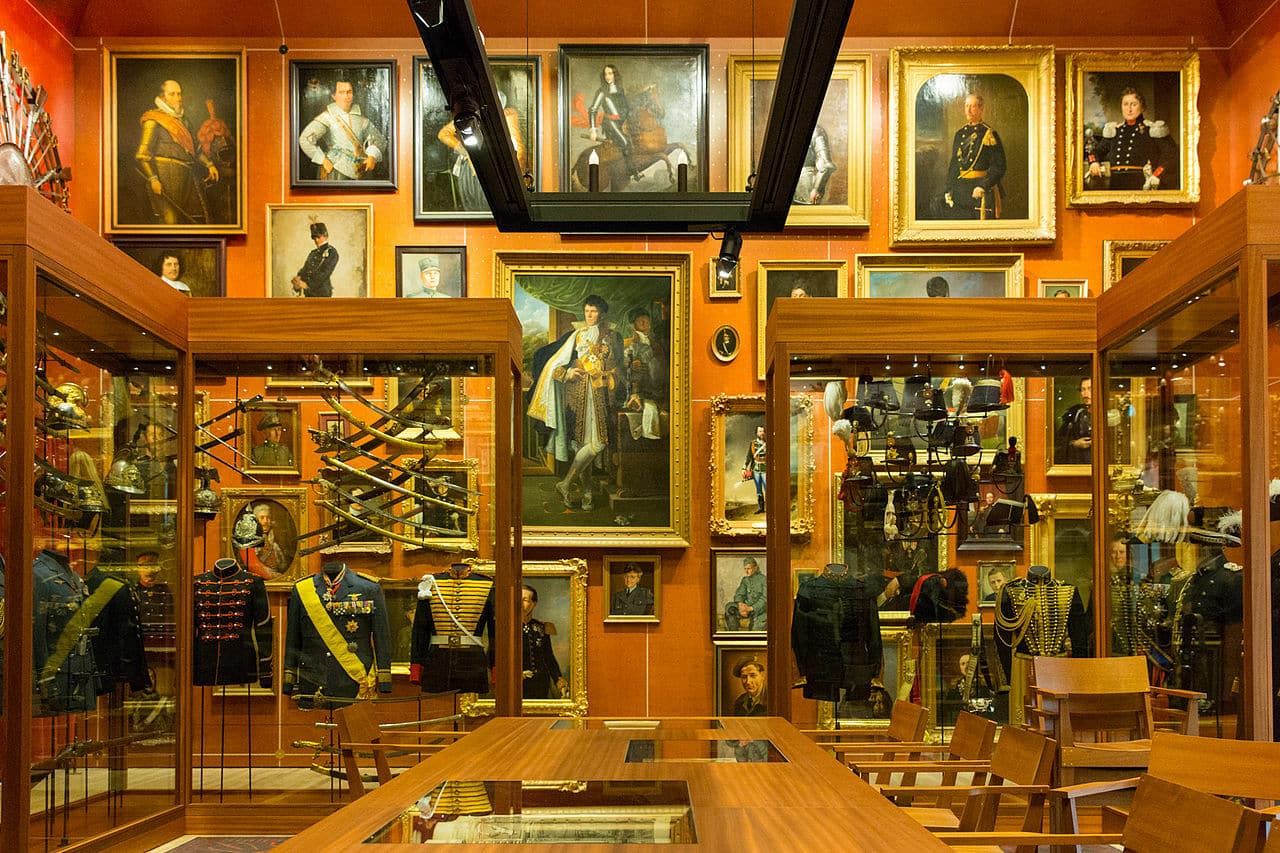 In the treasure room, portraits of army officers in suits of armour vie with wagon wheels full of rifles and ceremonial sabres.
In the treasure room, portraits of army officers in suits of armour vie with wagon wheels full of rifles and ceremonial sabres.© NMM
But the NMM is certainly not limited to spectacle and displays of muscle flexing. Yellow arrows on the ground lead through spartanly designed halls with high educational content. For example, in the room with uniforms of the various armed forces, the concept of a ‘monopoly of violence’ is explained. And then right at the beginning, in the first hall, the visitor is introduced to the five types of warfare that have shaped Dutch history. The story meanders from the sieges of the Eighty Years’ War and the battles of the Napoleonic era through the all-out war of 1940-1945 to the campaigns and guerrilla tactics of the decolonization struggle and the peacekeeping missions in Korea, Lebanon, and former Yugoslavia.
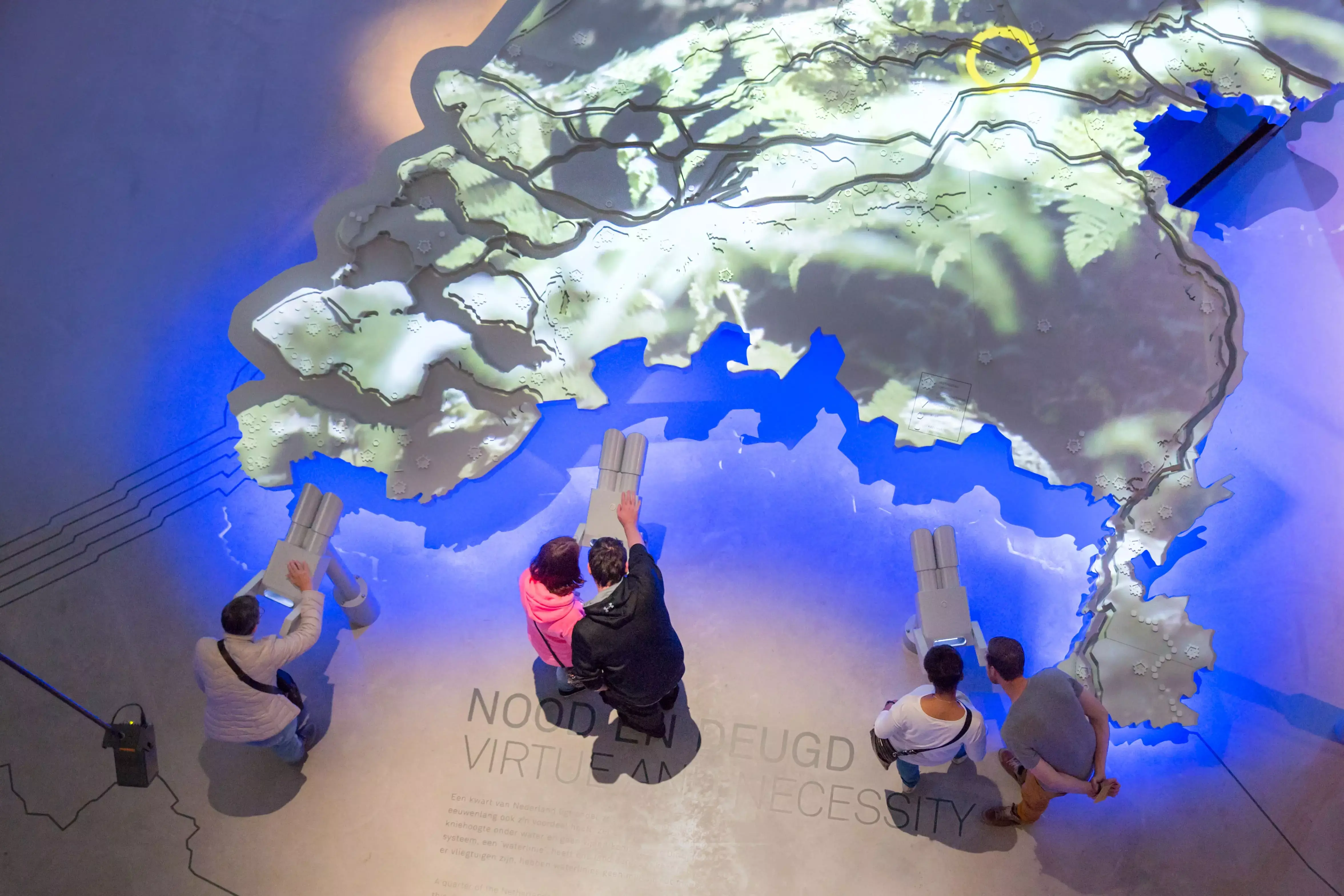 Yellow arrows on the ground lead through spartanly designed halls with high educational content.
Yellow arrows on the ground lead through spartanly designed halls with high educational content.© Anne Reitsma / NMM
This is quite a complex subject matter, according to some even a tad dull, but the museum knows how to bring it to life with many means of communication. The battlefield is depicted with realistic dioramas, a video game allows you to lead the siege of a fortified city yourself, on screens historical layers of documents are separated out and then there are also the ‘ordinary’ objects with conventional text boards. The more passive consumer can go to the dome in the middle of the room, where the information is laid on thick complete with animations, voice-over, and dramatic music.
The tone of this knowledge bombardment is remarkably neutral. J.B. van Heutsz, the former governor-general in the Dutch East Indies who unleashed a massacre in Aceh, is not called a war criminal, but is referred to the ‘the epitome of colonial misconduct’. Nowhere is the big drum beaten about an illustrious military past nor a single word about the hero status of ‘our boys’. The NMM is not a showcase for the Ministry of Defence but offers a balanced cultural-historical presentation.
The modern Dutch defence apparatus has always adapted to developments in civil society, so that it has not become a closed world with its own subculture and potentially dangerous dynamics
This is particularly evident in the room dedicated to the anchoring of the armed forces in society. The period of resistance to the army, and especially conscription, is not avoided but instead widely discussed. Posters of activists’ clubs and pacifists (‘Not shooting is always peace’) are contrasted with recruitment campaigns of the Ministry of Defence that became increasingly cautious and only dared to strike a more forceful tone when a 100% professional army was established.
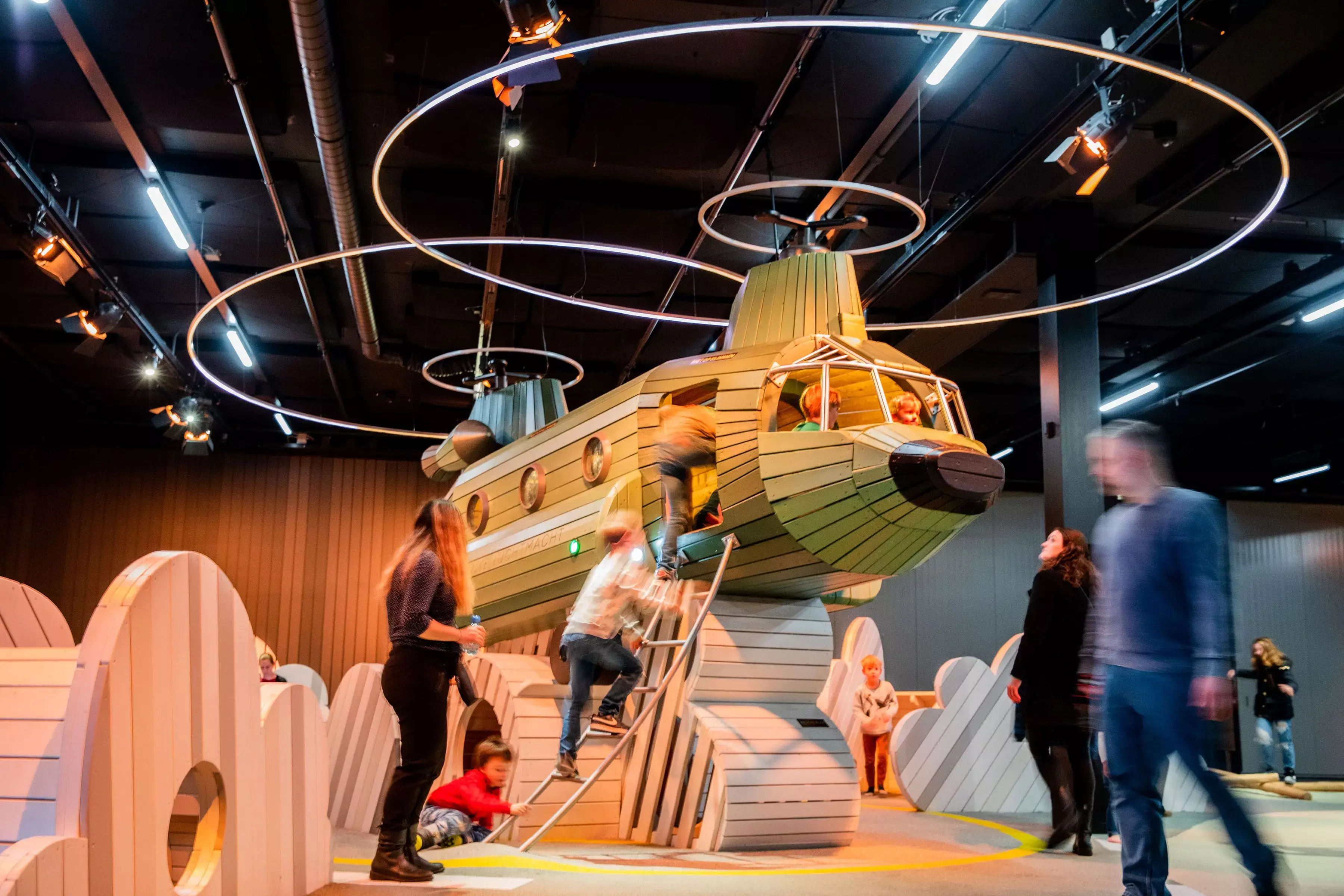
© NMM
It is not said in so many words, but the modern Dutch defence apparatus has always adapted to developments in civil society – abolition of the obligation to salute and acceptance of gays are good examples of this – so that it has not become a closed world with its own subculture and potentially dangerous dynamics.
The museum is scheduled to replace the last examples with F-35s next year – the museum is silent about the political fray surrounding the previously intended successor JSF. But the old fighters will not be scrapped or relegated to training targets. Ukrainian President Zelensky has asked for F-16s for months, and with the permission of his U.S. counterpart Biden, an actual handover is in sight. And so, a museum that tells so many historical stories suddenly finds itself at the centre of current affairs.












